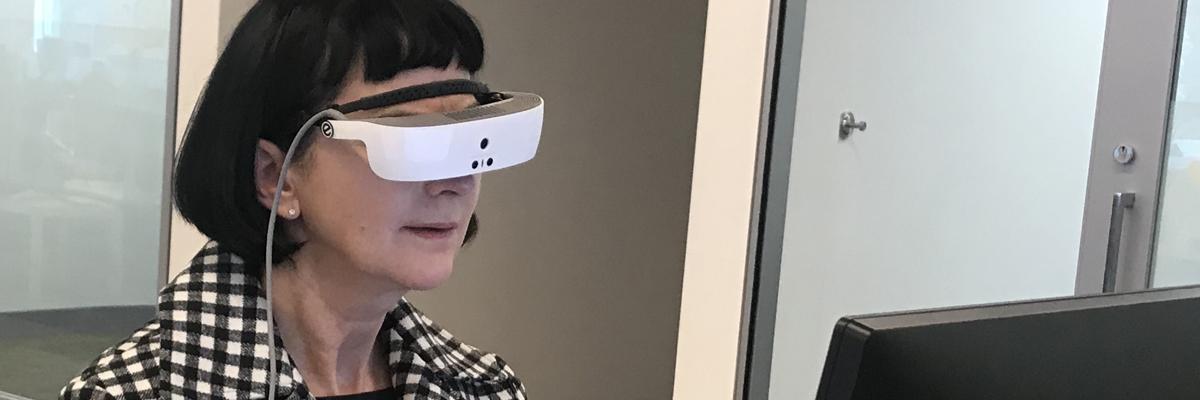Julia Lewis had a successful career as an electro-analytical chemist, until her mid-thirties when she lost her sight. Unable to continue in the same line of work, but undeterred, she started working with colleges and universities on establishing health and safety and enterprise risk management departments, with help from assistive technology.
Being the brother of an electrical engineer, Julia had access to the cutting edge of tech, often acting as a “living lab” or new ideas. She also used more traditional items like CCTVs, ZoomText, screen magnifiers and more.
All of these were useful to her, but each of them only did one thing. That meant maintaining a stable of large, clunky devices to meet all her needs. That was even more difficult in a job that meant travel, presentations, and interacting with others.
“I had to rely on others and memorize things any time I left the office to make a presentation, find a location, work on collaborative documents, or Chair a meeting,” says Julia. “I didn’t have anything I could take with me to fully enable all functions and activity.”
That changed in 2006 when her brother asked her to try an early version of eSight glasses. These glasses were small enough to be portable and versatile enough to do the jobs and more of all her other tech.
“It was wonderful to be out in public and to be able see people’s faces instead of a mess of grey,” says Julia. “It really allowed me to re-gain my independence.”
Since then, the technology has only improved. Autofocussing allows Julia to easily transition between looking at her computer screen, looking at her phone to check a text, and then up to view others in the environment and recognize a colleague who just stopped by at her desk. The glasses themselves are getting lighter, which allows them to be worn for longer periods of time without fatigue.
It’s no surprise that Julia now finds herself working in commercial accessibility, with a focus on compelling the adoption of technology. She knows first-hand just how liberating it can be.
Read more about CNIB's partnership with eSight at https://cnib.ca/en/news/esight-and-cnib-announce-national-partnership-benefit-canadians-sight-loss.
